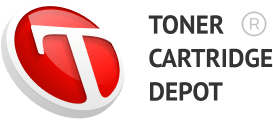The inkjet printer has come a long way from a supplementary project inside a hi-tech corporation to most popular computer printing device.
If you own a printer at home, the chances are good it’s an inkjet printer. Nowadays, inkjet printers are the most popular printing device for home and small office use, but it has not always been like that.
From the 1960s into the 1980s computer printing was dominated by dot-matrix printers. Some of them can still found around. Unfortunately, dot-matrix still used an impact method for printing (pretty much like typewriters), so the problem of noise and speed limitations remained. With word processing getting more and more important, a fast, quiet, high-quality printer became required.
In the early 1980s, introduction of the laser printer met that need. By eliminating the need for physical impact against a ribbon, laser printers achieved much higher speeds and were able to work in almost silence. As personal computers grew popular during the 1980s, laser printers became the only acceptable choice for “letter-quality” printing, regardless the cost of several thousand dollars.
However, the laser printer’s reign was eventually overtaken by a technology developed at the Hewlett-Packard. HP, along with Epson and Canon, can claim a substantial share of credit for the development of the modern inkjet, and we will consider the history of inkjets from the HP’s point of view.
Funny thing is, HP’s invention was not originally intended for personal computers, since when the project began in the late 1970s, there were no such things. Instead, HP was looking for a new printing mechanism for portable, battery-powered calculators, its most profitable consumer product.
One of the company’s main goals in its printer project was to reduce the power consumption of its printing calculators. At the time, some calculators output their results by striking a type bar against an inked ribbon. Others had thermal print heads, consisting of a small column of resistors that could be electrically heated and pressed against a thermally sensitive paper or ribbon. Thermal printers required a special kind of paper and had problems with the type fading over time. They also used a lot of battery power.
Printer research had been a part of HP’s calculator development work since the beginning. In the early 1970s, the engineers at HP’s advanced research laboratory in Palo Alto, California designed the HP-35 also built a prototype “pocket plotter” to output graphs. Later HP engineers in San Diego and in Andover, Massachusetts, developed this prototype into a practical device they called a “grit wheel” plotter, which was used with computers and graphing instruments.
Building on this success, in 1978 managers of HP’s Corvallis, Oregon, facility started a project to apply the grit-wheel idea to calculator plotters and later, in the fall of 1979, the very inkjet project started.
In HP’s central advanced-research laboratory in Palo Alto, an engineer named John Vaught demonstrated the use of thermal heating to eject droplets of ink through a tiny orifice to print text. The idea of inkjet printing was not new in itself, but Vaught’s mechanism was the first to look suitable for use in a mass-produced consumer product.
The inkjet project got a big boost when its research staff hires Niels Nielsen, a very free-spirited mechanical engineer with less than a year’s experience. Nielsen began by examining the existing technologies. A key goal was to find a simpler way to spray the ink out. In 1979, Siemens introduced the printer that used a piezo-electric device to spit the ink out.
In the Siemens printer, an electric current was applied to piezoelectric crystals, causing them to exert a force on the ink in a tube and eject it through a hole onto the paper. This method was smart and reliable, but it was not suited for a low-cost, disposable item, while the idea of using thermal heating looked promising for mass production.
